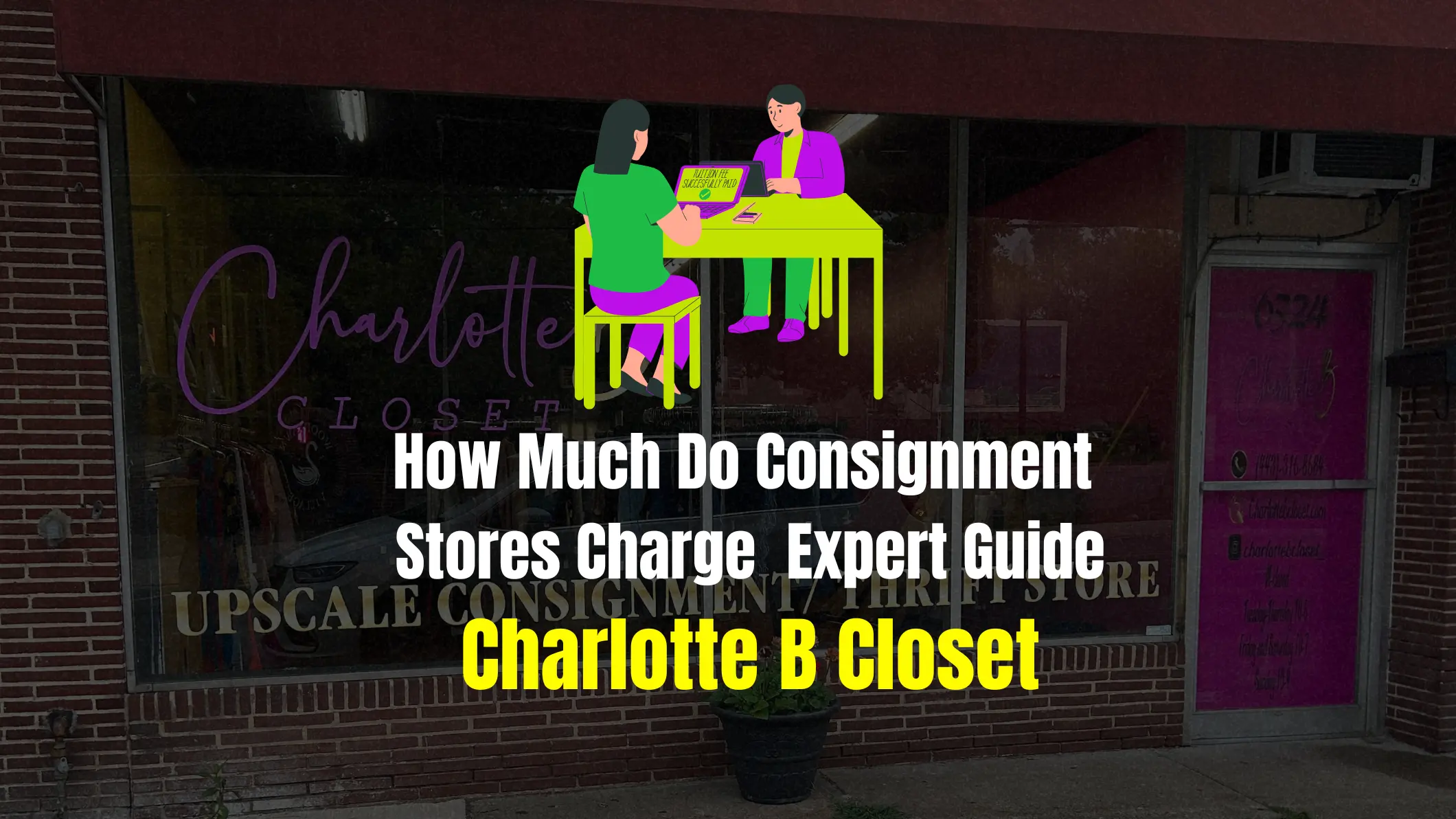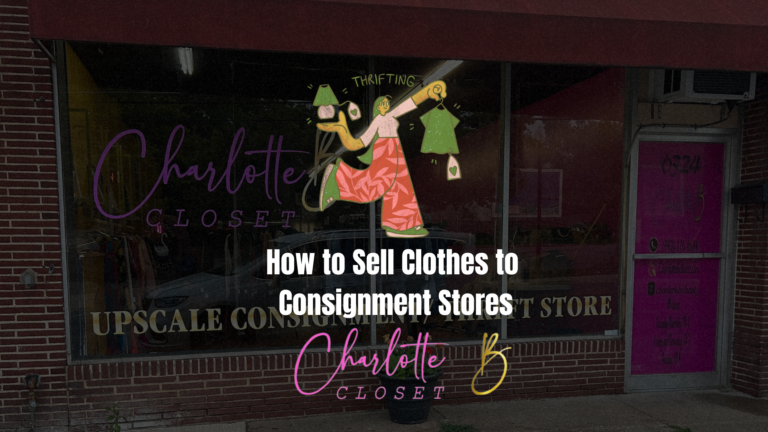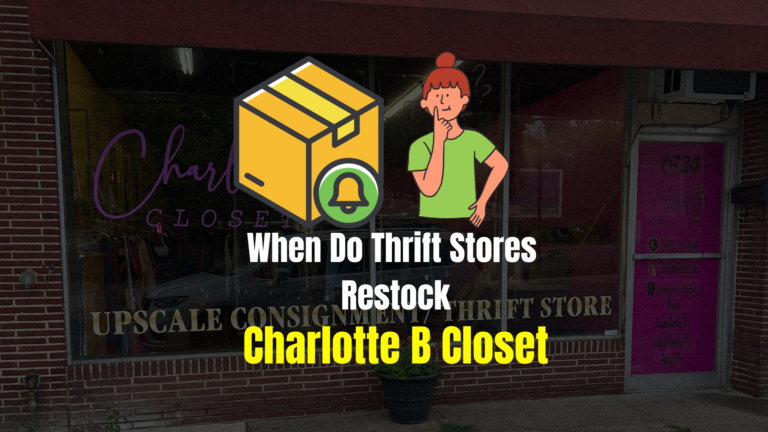How Much Do Consignment Stores Charge – Expert Guide
Navigating the world of consignment stores can often seem like a maze, especially when it comes to understanding their commission structure.
If you’ve ever wondered, “How much do consignment stores charge?” you’re not alone. Many people find themselves asking the same question.
Consignment shops generally charge a commission of around 40% in a typical 60/40 split, though rates can vary depending on the type of item, its condition, and the specific shop.
This commission model aids the stores in sustaining their operations while offering sellers a platform to fetch a fair price for their goods.
If you wondering about our upscale consignment shop/ thrift store check our consignment policy for more details.
How Much Do Consignment Stores Charge? – Quick Guide
Delving deeper into the question “How much do consignment stores charge?” reveals a more complex scenario. While the average consignment shop operates on a 60/40 split favoring the consignor, this rate isn’t set in stone.
The commission could vary, reaching up to a 50/50 split or even tipping over to a 40/60 split favoring the store.
The commission structure largely depends on factors such as the type of product, the brand or quality of the item, its condition, and even the location and clientele of the consignment store.
Why Do Consignment Stores Charge?
Consignment stores offer an ingenious solution to both buyers and sellers. They serve as a platform where sellers can offload items they no longer need or want, and buyers can find unique or hard-to-find items at discounted prices.
The business model of consignment stores revolves around selling items on behalf of the owner. The store only makes a profit once the item sells. The amount the store earns is a percentage of the selling price, known as the consignment fee.
One might wonder, why do consignment stores charge? The answer is straightforward. Consignment stores have operational costs such as rent, utilities, staffing, and advertising.
They also spend time and resources displaying items attractively, promoting them, and sometimes even repairing or cleaning them. The consignment fee covers these costs and also provides the profit margin for the store.
Consignment fees are vital for sustaining the operations of a consignment store. Unlike traditional retail stores, where items are bought wholesale, and the profit margin is embedded in the selling price, consignment stores rely entirely on the consignment fee for their revenue. Without this fee, it would be challenging for such stores to stay in business.
How Much Do Consignment Stores Charge?
So, exactly how much do consignment stores charge? While there isn’t a one-size-fits-all answer, typically, consignment stores take a commission of around 40%, resulting in a 60/40 split.
This means that the seller receives 60% of the selling price while the store takes the remaining 40% as their commission.
But the commission rates can also fluctuate and occasionally, you may see a 50/50 or even a 40/60 split favoring the shop. These rates highlight the sharing pattern of the selling price between the store and the seller.
The charges can vary considerably, depending on numerous factors, such as:
- Type of Product: The category of the item can influence the commission rate. For instance, electronics may carry a different rate than clothing or furniture.
- Brand or Quality of the Item: High-end brands or superior quality items might command a smaller commission rate due to their higher selling price.
- Condition of the Item: The state of the item when it reaches the store can also influence the charges. An item in excellent condition may fetch a better price and hence, a different commission rate.
- The Consignment Store’s Location and Clientele: Upscale consignment shops in affluent areas may have a higher commission rate due to the premium quality of items they carry and their high-spending clientele.
However, there’s more to consignment store charges than just percentages. Other elements also come into play, such as how long it takes for an item to sell and whether the price decreases over time due to a lack of interest or seasonal changes.
How Do Consignment Shops Calculate the Charge Rate?
Consignment stores calculate their charge rate as a percentage of the item’s selling price. So, if a store operates on a 60/40 split favoring the consignor, and an item sells for $100, the consignor receives $60, and the store takes $40 as their commission.
The calculation process isn’t as straightforward as it seems. There are several underlying factors that play a significant role, such as:
- Agreed Commission Percentage: This is the initial rate agreed upon by the seller and the store. It forms the basis of the charge calculation.
- Item Value: High-value items may command a lower commission percentage due to their larger selling price.
- Item Condition: The better the condition of the item, the higher the selling price, which can affect the overall commission.
- Time to Sell: Items that take longer to sell may incur a higher commission rate to compensate for the store’s storage and maintenance.
It’s essential to note that different consignment stores may have different ways of calculating the charge rate. Some might have a sliding scale where the commission percentage decreases as the item’s price increases. In contrast, others might have a flat rate regardless of the selling price, providing a predictable commission rate for both the store and the consignor.
Why is the Consignment Percentage Different from Wholesale Percentage?
There is a fundamental difference between consignment selling and wholesale selling. In wholesale, the retailer buys the goods upfront and assumes the risk if the items don’t sell. In consignment, the store doesn’t pay anything until the item sells. This difference in risk is why the consignment percentage is often higher than the wholesale percentage.
The reasons behind the difference in percentages between the two models are mainly risk and cash flow. With consignment, the store doesn’t have to tie up cash in inventory that might not sell. However, they risk earning nothing if the item doesn’t sell, and they also need to make enough on each sale to cover their costs.
The impact on profits can be significant. While consignment shops can theoretically make more per item due to the higher percentage, they also risk making nothing. Wholesalers, on the other hand, can control their profits more directly but must be more cautious in their buying decisions to avoid being stuck with unsold inventory.
Consider a retail store that buys a pair of shoes wholesale for $50 and sells them for $100, making a profit of $50 per pair. A consignment store, however, might sell the same pair of shoes for $100 but only pay the consignor $40, making a profit of $60 per pair. However, if the shoes don’t sell, the consignment store makes nothing, while the retail store is left with a pair of shoes they paid $50 for.
Conclusion
In conclusion, understanding the charges levied by consignment stores involves more than simply asking, “How much do consignment stores charge?”
It requires a deeper dive into the numerous factors influencing the commission rate, including the type of product, its condition, and the specific practices of the consignment store.
Knowing this information, sellers can choose the most appropriate consignment store for their items and negotiate the best possible rate. In the end, consignment selling is a game of strategy where knowledge truly is power.
FAQs

Hi there, I’m Toni Whitten, but you might know me as LadyT. I’m a passionate entrepreneur and the proud owner of Charlotte B’s Closet, your go-to thrift store and upscale consignment.
Outside the store, I connect with the amazing women in my exclusive Facebook group, Housewives of Baltimore, boasting over 23k+ members.
In my free moments, I channel my passion for sharing genuine insights and helpful guides on various concerns through my blog at charlottebcloset.com.







